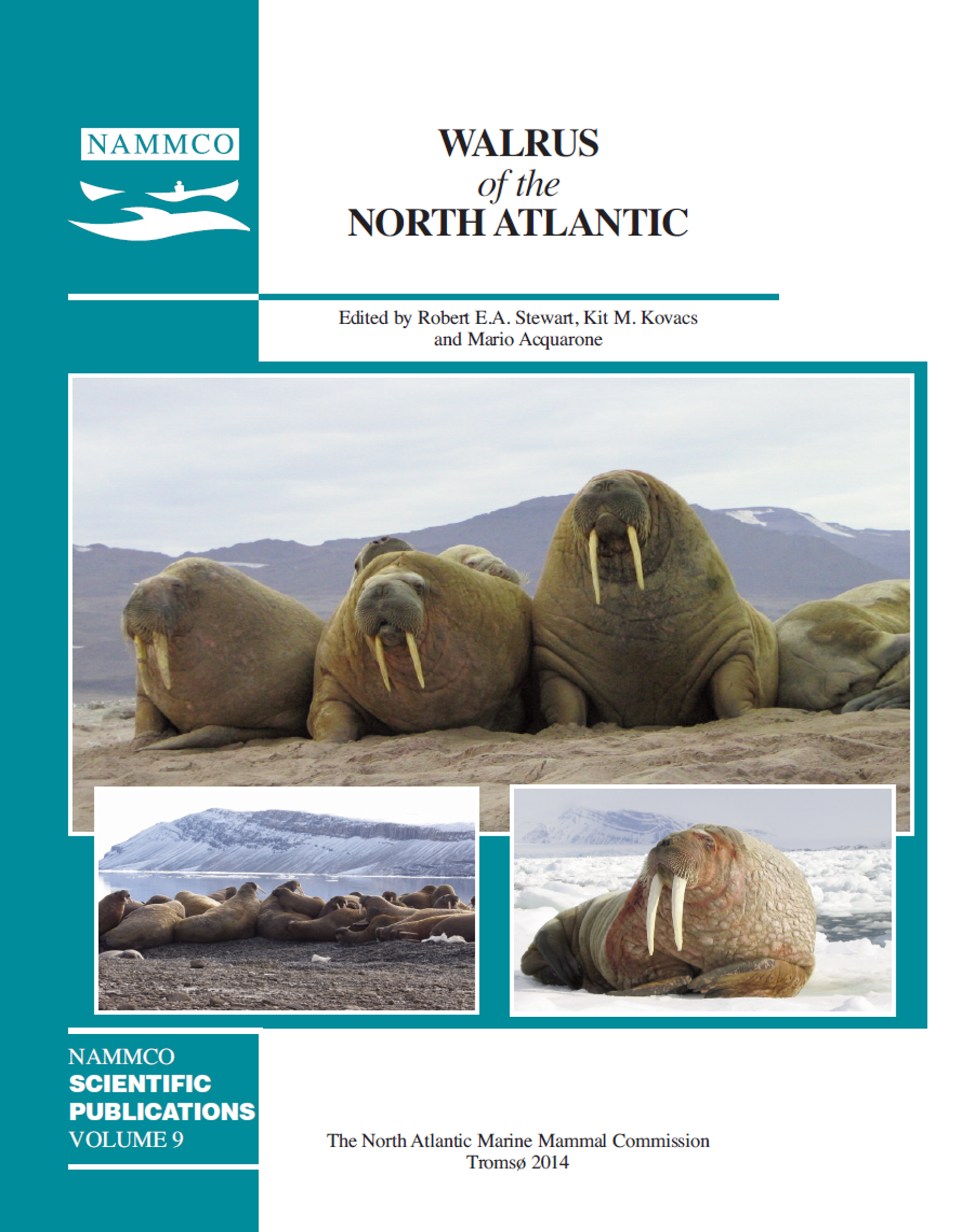Walrus Odobenus rosmarus research in Svalbard, Norway, 2000-2010
DOI:
https://doi.org/10.7557/3.2613Keywords:
walrus, Odobenus rosmarus, tagging, movements, biopsy, fatty acids, diet, contaminants, organochlorinesAbstract
Herein we report results from studies on walruses in Svalbard conducted in 2000-2010. Data from newly developed satellite relay data loggers (SRDLs) revealed seasonal differences in habitat use of adult male walruses. During winter, they moved into areas of >90% ice concentration, traveling as far as 600 km from ice-free water. Breeding areas deep into the pack ice were identified based on timing of the occupancy and diving behaviour. When the breeding season was over, walruses with SRDLs that were still transmitting locations returned to the coast, showing high site fidelity to the previous year’s summering area. Haul-out data from the SRDLs provided correction factors for an aerial survey of walruses that covered all known haul-out sites within the Svalbard Archipelago. This survey estimated 2,629 (95 % CI; 2,318 – 2,998) walruses to be in Svalbard during August 2006. Blubber biopsies from adult male walruses analyzed for fatty acids (FAs) showed vertical stratification similar to that observed in many other marine mammals. However, differences between layers were less pronounced, possibly because the thick dermis of walruses provides an insulating shield, affecting the FA composition of the outer blubber. The FA composition of the inner blubber most closely resembled the lipids in Mya truncata and Buccinum spp., which are considered the most important walrus prey in Svalbard. A study investigating the use of skin biopsies for assessing levels of organochlorines (OCs) in walruses found a significant relationship between OC levels in skin and blubber. Another contaminant study found a significant decrease in levels of PCBs and DDE in walruses in Svalbard from 1993 to 2002-04. Large inter-individual variation in OC levels was found, although all of the study animals were adult males from roughly the same location. In FA analyses of the inner blubber this variation appeared to be diet-related, with high OC levels having FA compositions in the inner blubber that closely matched seal tissues, while those with low levels matched typical invertebrate prey. Various enzymes, proteins, metabolites, minerals, and hormones were measured in blood samples to serve as baseline data for future health-related studies of both wild and captive walruses. Historical sex-distribution of walruses in southern Svalbard was investigated based on mandible measurements of individuals hunted during the 19th century.The analyses showed that female walruses were once more common in south-eastern Svalbard than they are today.





